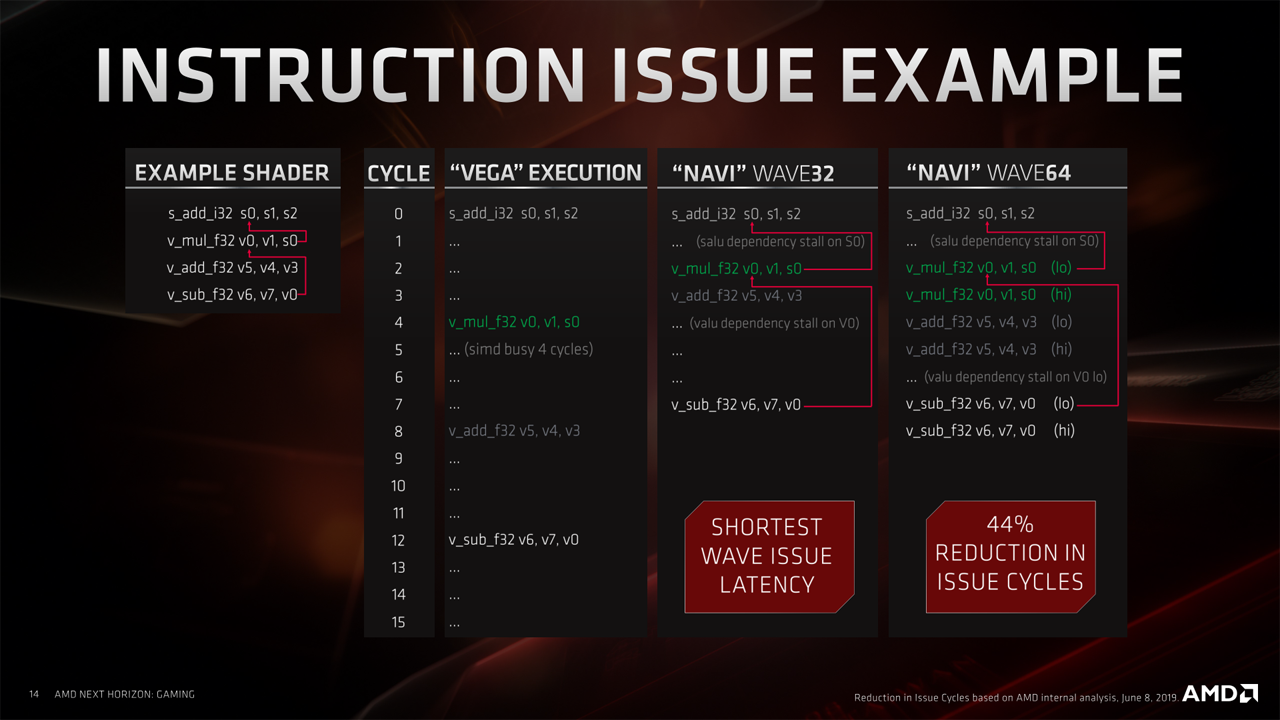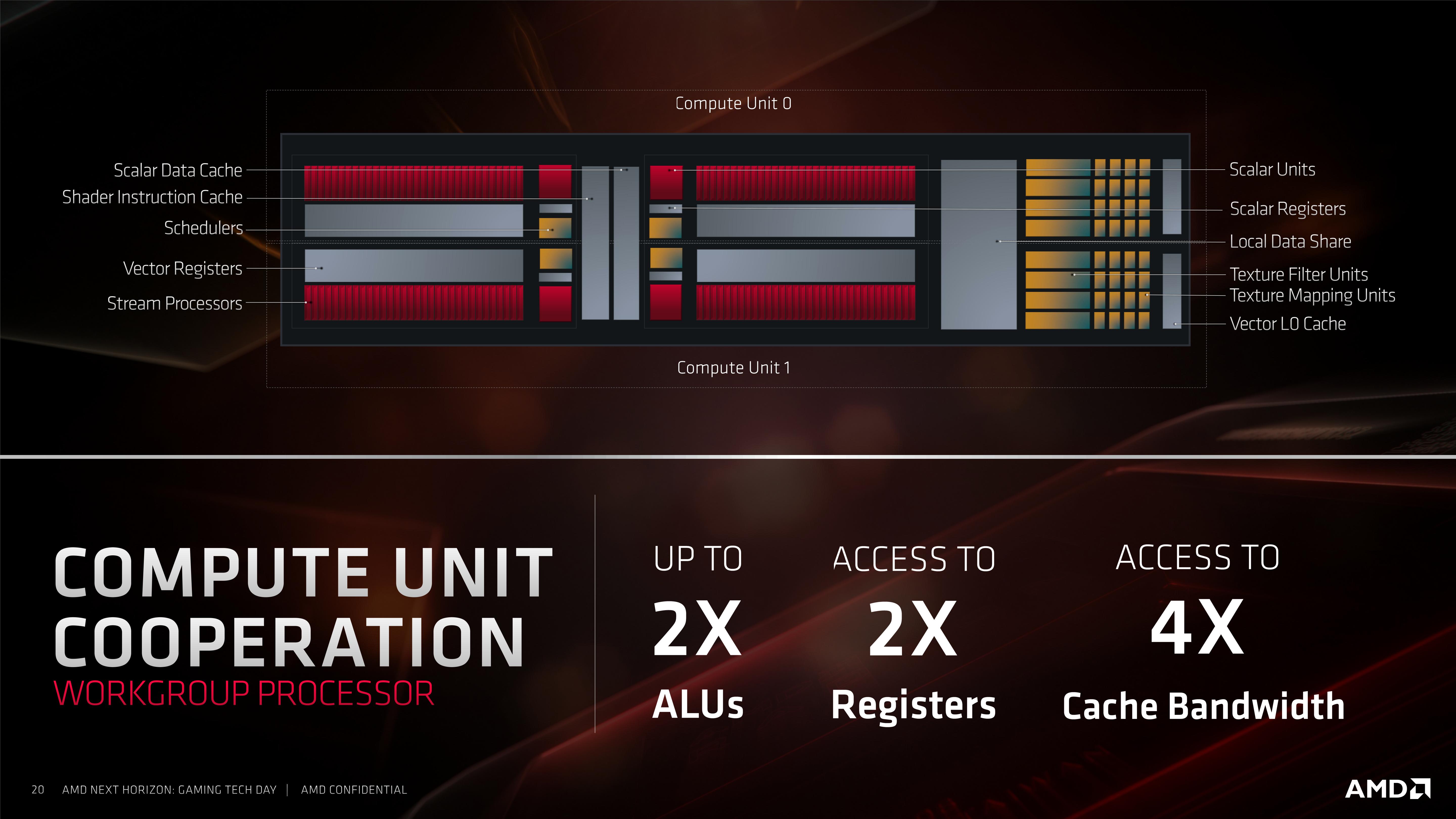That’s TBP. 150W is chip TDP.
Yes, that's why I said the board was 180W. That's the relevant number for PCIE compliance, if I'm not mistaken.
Follow along with the video below to see how to install our site as a web app on your home screen.
Note: This feature may not be available in some browsers.
That’s TBP. 150W is chip TDP.
I think there's merit in this idea but it also appears to be somewhat limited, at least in terms of how much performance might be left on the table.nVidia does 32-wide, and approximately all privately written GPGPU code was optimized for that. AMD needs to match it to minimize expense of translating code between the archs for it to have any hope of ever properly competing in the space.

Isnt that precissely what was described in the super simd patent?.I don't understand why there are "dual compute units". They appear to share instruction and scalar/constant caches, which seems like a weak gain. I don't fully understand the slide that refers to a "Workgroup Processor", it seems to be saying that because LDS and cache are "shared" huge gains in performance from issuing large workgroups are possible. So perhaps If you have a workgroup of 128 or 256 running in Workgroup Processor mode, then you get twice as much LDS capacity and 4x the cache bandwidth as on just a single compute unit.
Twice the LDS capacity without the usual occupancy penalty?So perhaps If you have a workgroup of 128 or 256 running in Workgroup Processor mode, then you get twice as much LDS capacity
Yes, but you shouldn’t scale the RAM power by the CU count then.Yes, that's why I said the board was 180W. That's the relevant number for PCIE compliance, if I'm not mistaken.
Raven Ridge uses IF. It's just their defacto interconnect for everything since it arrived (c. 2017), chiplets are just another usage case.It was infinity fabric. I think it's the first time it's used for a monolithic APU without HBM ram ?
AMD Next Horizon: Gaming PDFWhere do those slides come from?
I paid a little under 700$. Planning to keep it for ~5 years. As of today I would guess 1080ti is only bested by 2080ti and trades blows with 2080 and radeon vii. Pretty good for old piece of junk.
I'm much more in the camp buy high end and use it long time to get value rather than getting new mid tier crap every 1.5 years. There was time when updating often made sense but that is not anymore.
Yes, but you shouldn’t scale the RAM power by the CU count then.
Only the bit about 8 primitive shaders into the geometry processor and 4 out a cycle, nothing else really.Is there any news about Polygon output per cycle or per Second?
Only the bit about 8 primitive shaders into the geometry processor and 4 out a cycle, nothing else really.
No, that block diagram is exactly for Navi10, 20 double-CUs packed into 4 macro-blocks which themselves are packed into 2 SEsIt also seems like the block diagram is for the most basic type of Navi chip, which might be a 20 "Compute Unit" part? So a 5700 could be two of these put together.
No, that block diagram is exactly for Navi10, 20 double-CUs packed into 4 macro-blocks which themselves are packed into 2 SEs
I don't know. I didn't give that a very close read when it appeared and haven't looked since...Isnt that precissely what was described in the super simd patent?.
It sounds like nV's TPC, where two SMs share some blocks together.but haven't gotten a definitive answer as to what a "double compute unit" is from someone that knows for sure.
Yes, every AMD architecture has been able to vary these numbers. That's why the 5700 works, not just the 5700 XT.Is the 10 CUs for one shader engine design mandatory for RDNA ? Is it possible to use for instance 8CUs (well 4 Dual compute units) by SE ?
Each Shader Engine contains 10 Workgroup Processors, which in turn each contain 2 CUs. The CUs inside of a WGP can be grouped up to cooperate on workloads, if the compiler deems it beneficial.I've been trying to figure that out, but haven't gotten a definitive answer as to what a "double compute unit" is from someone that knows for sure. I'd first assumed it was 20 CUs per Se, but saying "double compute unit" is weird, especially with their Super SIMD like 32/64 wavefront, which could be a "double compute unit"

